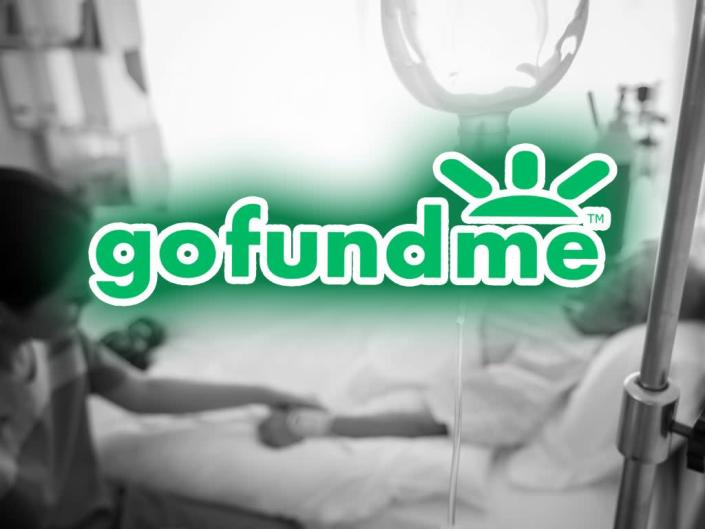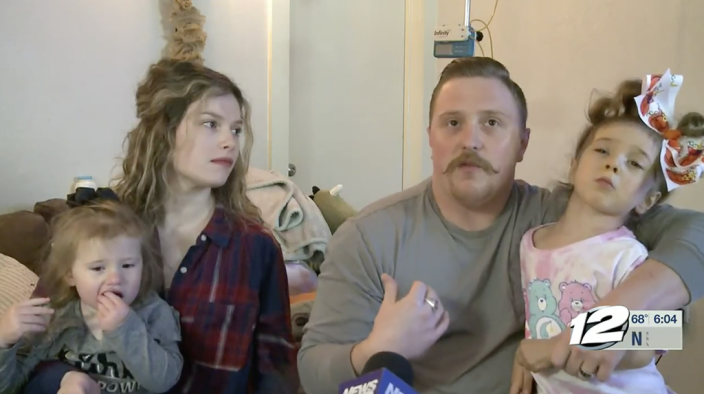[ad_1]

In the United States, the news is full of inspiring stories about GoFundMe – tales of communities pulling together to pay for someone’s life-saving medicine, operation, or treatment. It’s the heartwarming flipside to the broader story of American healthcare, in which medicine is a for-profit industry and patients risk dying if they can’t pay their bills.
That context is usually left out, as well as another detail: such fundraisers usually fail.
According to a study by the American Journal of Public Health (AJPH), from 2016 to 2020, only 12 per cent of GoFundMe campaigns for medical expenses reached their target amounts. Sixteen per cent received no donations at all.
And that’s not for lack of trying. In that same period, over $2bn was raised by healthcare-related GoFundMe pages. The problem is most of that money was concentrated in communities where incomes and access to health insurance were already high.
“Despite its popularity and portrayals as an ad-hoc safety net, medical crowdfunding is misaligned with key indicators of health financing needs in the United States,” wrote the study’s authors, Dr Nora Kenworthy and Mark Igra. “It is best positioned to help in populations that need it the least.”
The Independent asked GoFundMe for comment but had not heard back by the time of publication. But the company’s former CEO, Rob Solomon, has said a third of all the website’s campaigns are for medical care – and that concerns him.
“When we started in 2010, it wasn’t purposefully set up and built to be a substitute for medical insurance,” Mr Solomon told CBS News. “We weren’t ever set up to be a healthcare company and we still are not… A crowdfunding platform cannot and should not be a solution to complex, systemic problems that must be solved with meaningful public policy.”
And yet that’s exactly how many families have used it – as a backup safety net to fill in where the system falls short.
One such family is Josy and Dustin Baker of Bells, Texas. In May 2021, their four-year-old daughter, Lylah, fell ill with melioidosis, a rare disease caused by a foreign bacterium. Beginning with just an upset stomach, within days Lylah lost the ability to walk or even to hold her head up. In June she was hospitalized, and spent a month on a ventilator.
The costs of Lylah’s treatment were astronomical. Just to stay in an intensive care unit was $10,000 per night, her parents said. On top of that, there were multiple plasmapheresis treatments, which cost $45,000 apiece – Lylah received four. And then there was her brain surgery, which cost more than $100,000.
Luckily, Dustin’s health insurance provider covered most of these expenses. But as Lylah began to recover, he said, the company started denying their claims. Today Lylah, now 5, is out of the hospital and gradually regaining her strength at home through physical therapy.
“It’s a constant battle for her every day,” her mother says. “But she’s winning just a little bit more every day.”

Just to keep hope alive that Lylah will one day walk and talk again, she requires three physical therapy sessions a day, five days a week, each of them costing $400. Dustin’s insurer paid for 18 sessions – total.
“That is all they gave her,” Dustin said. “The rest is out of pocket.”
This is where GoFundMe came in. Hearing the horrific news about Lylah, a friend of the Bakers started a fundraising page for them, and donations started flooding in. As of April 2022, the GoFundMe has raised almost $88,000.
Would the Bakers have been able to pay their bills without it?
“Absolutely not,” Josy said. “There is literally zero chance.”

The Bakers are extremely grateful to everyone who donated, and the generosity of their community is, in fact, inspiring. But experts say the fact that families like theirs turn to GoFundMe in the first place means something is wrong.
Allison Sesso is the director of RIP Medical Debt, a charity that works to relieve low-income patients of medical bills they can never pay. For most patients, Ms Sesso says, the US healthcare system is a “tug of war” between hospitals trying to get paid and insurance companies trying to pay them as little as possible.
“They’re going to push back on the hospitals; the hospitals want to get paid, so they’re going to keep pushing back,” Ms Sesso explained. “And so it’s this seesaw going back and forth between them and the patient stuck in the middle.”
Whatever difference remains, the patient ends up footing the bill. Some families, like the Bakers, can successfully raise that amount through a fundraiser. But most people can’t.
“Of course, that’s good for those individuals that are able to actually do that,” Ms Sesso said. “But I don’t think, as a matter of principle, we should be leaning on people … to tell your personal story and put it out there publicly in order to get yourself covered.”

This is especially true, she said, because some stories inspire fewer donations than others – but that doesn’t make them any less important.
“It’s good for the child who has cancer and they’re able to tell that story and people are moved,” she said. “But what about the middle-aged man that’s just a diabetic and needs ongoing support for his life-saving medication?”
RIP Medical Debt uses donations in a different way – to buy up people’s debts. The charity purchases entire debt portfolios from hospitals – sometimes consisting of thousands of patients – and wipes them out. To qualify, the debtors need only meet certain criteria showing they cannot afford their bills.
“Unlike GoFundMe, it’s not about your story,” Ms Sesso said. “We are completely blind to the person’s story, their situation. We just know that we are able to get our hands on that debt, and we send you a letter and you’re free and clear of it.”
So far, the non-profit says it has eliminated $6,748,483,828 in medical debts, providing relief to more than 3,619,950 patients. But unlike GoFundMe, people cannot apply for the group’s help, because it only deals directly with hospitals.
The best solution, Ms Sesso says, would be to change the healthcare system so no one has to depend on charity – whether from her group or from generous strangers on the internet.
“Everyone loves a heartwarming story,” she said, “but that doesn’t mean that that’s actually working for people on the whole.”
[ad_2]
Source link
